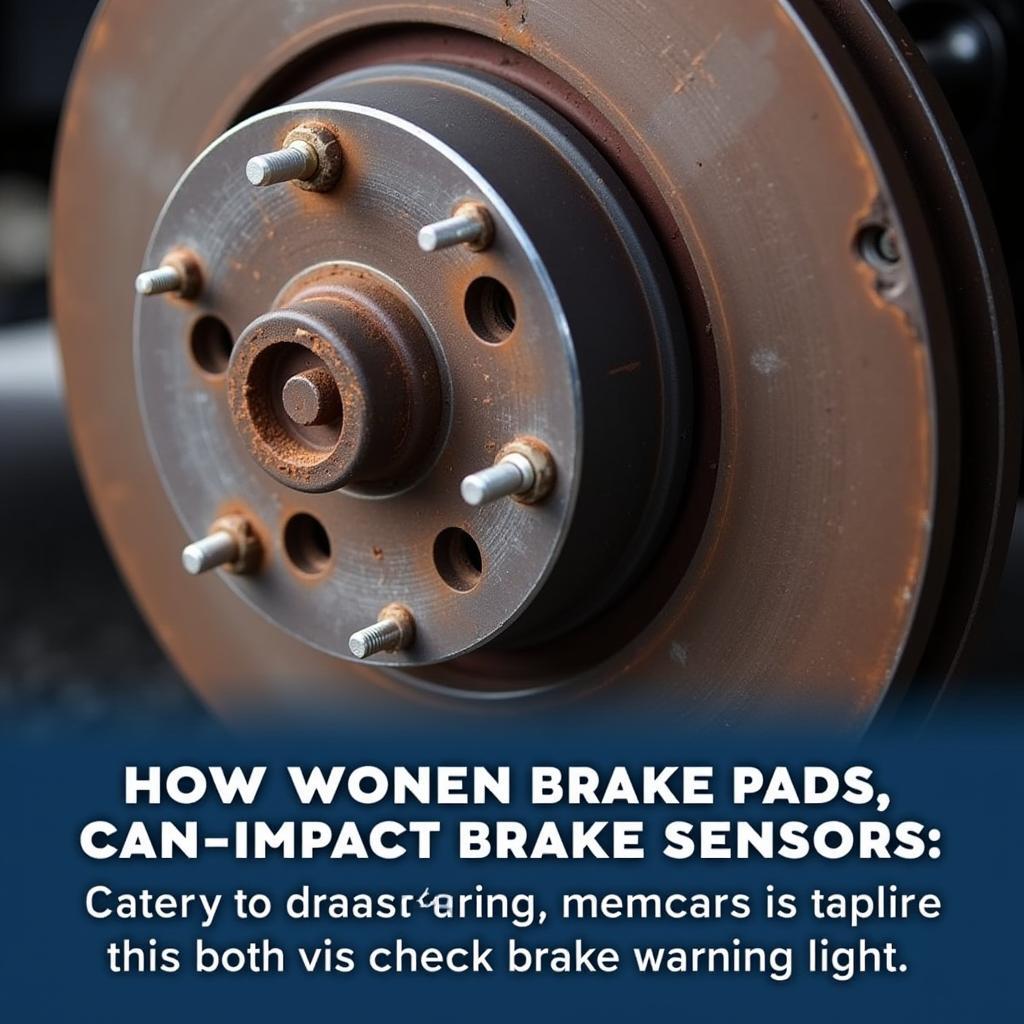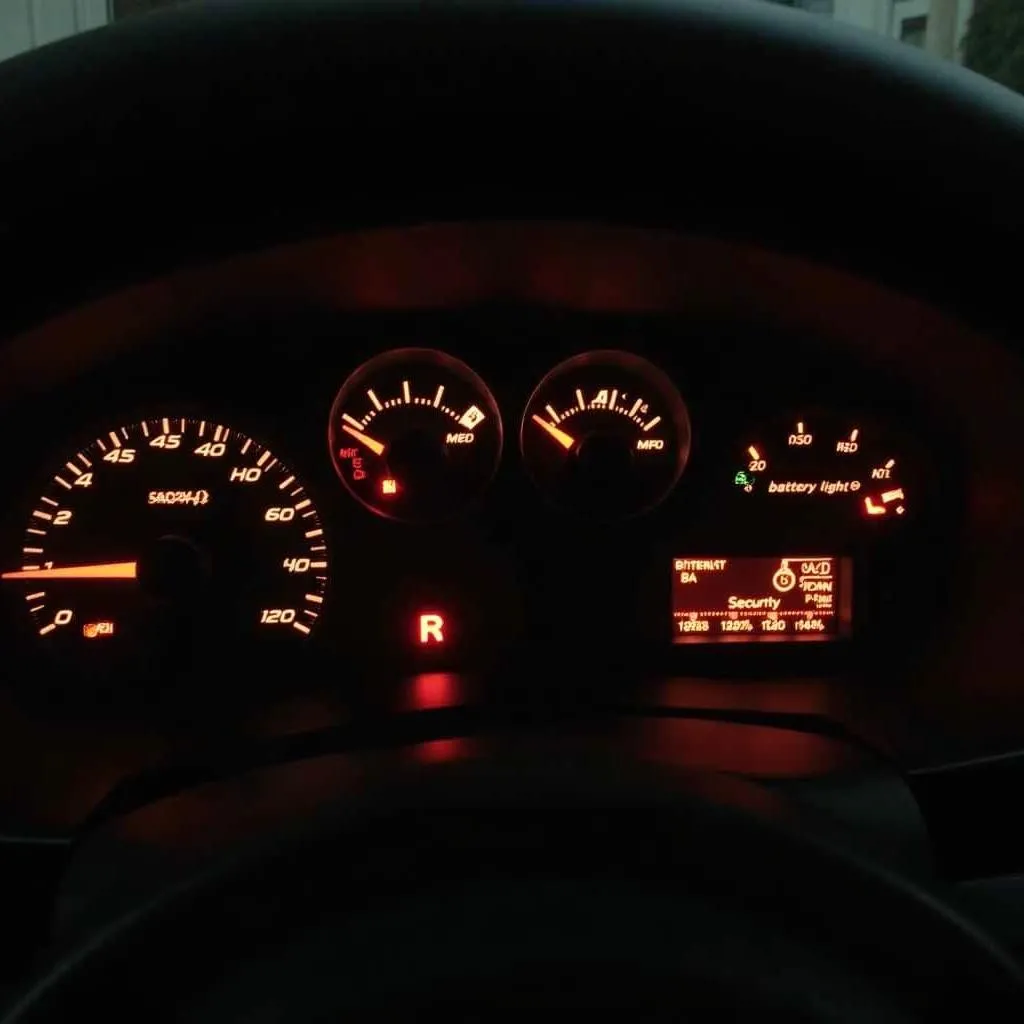Seeing a warning light illuminate on your dashboard can be unsettling. Two common warnings that can occur simultaneously are the check engine light and the parking brake light. While they might seem unrelated, their concurrent appearance could indicate a potential issue requiring attention. This article delves into the possible reasons behind these warning signals, guiding you on how to diagnose and address the problem effectively.
Decoding the Dashboard: Check Engine and Parking Brake Lights
Your car’s dashboard serves as a communication hub, relaying crucial information about your vehicle’s health. The check engine light, often depicted as an engine outline or the words “Check Engine,” signals a problem detected by the engine control unit (ECU). This light can be triggered by a range of issues, from minor glitches to more serious engine malfunctions.
On the other hand, the parking brake warning light, typically represented by an exclamation mark within a circle or the word “BRAKE,” indicates that the parking brake is engaged. While this light is usually straightforward, its persistence alongside the check engine light might suggest an underlying connection.
Why Are Both Lights On? Possible Culprits
1. Brake System Issues: A malfunctioning brake system can trigger both the check engine and parking brake warning lights.
-
Low Brake Fluid: Insufficient brake fluid level can activate the brake warning light and potentially impact the engine’s performance, triggering the check engine light.
-
Worn Brake Pads: Excessively worn brake pads can interfere with the brake system’s sensors, leading to both warning lights illuminating.
 Worn brake pads causing warning lights
Worn brake pads causing warning lights
2. Faulty Sensors: Modern vehicles rely heavily on sensors to monitor various systems, including the engine and brakes.
-
Faulty Brake Light Switch: A malfunctioning brake light switch can disrupt the signal sent to the ECU, activating the check engine light. Simultaneously, it can prevent the parking brake light from turning off even when the brake is disengaged.
-
Faulty Speed Sensor: A faulty speed sensor can disrupt the transmission of crucial data to the ECU, potentially triggering both warning lights.
3. Electrical Gremlins: Electrical issues can wreak havoc on a vehicle’s systems, leading to unexpected warning light combinations.
-
Short Circuits: A short circuit in the wiring harness connected to the engine control unit or brake system can cause erratic behavior, including the simultaneous illumination of both warning lights.
-
Loose Connections: Loose or corroded connections within the electrical system can disrupt communication between components, potentially triggering multiple warning lights.
What to Do When the Lights Come On
1. Safety First: If you notice the check engine and parking brake warning lights illuminated, it’s crucial to prioritize safety. Find a safe location to pull over and assess the situation.
2. Check Your Parking Brake: Ensure your parking brake is fully disengaged. Sometimes, an incomplete release can trigger the warning light.
3. Inspect Brake Fluid: Carefully check the brake fluid level in the reservoir. If the level is low, adding brake fluid might temporarily address the issue. However, it’s crucial to have your brake system inspected for leaks or other problems.
4. Consult a Professional: For a thorough diagnosis and effective repair, it’s recommended to consult a qualified mechanic, especially if adding brake fluid doesn’t resolve the issue.
what does the brake system warning light or gauge indicate
Remote Diagnostics and Software Solutions
Advancements in automotive technology have paved the way for remote diagnostics and software solutions for car problems. Remote diagnostics allow mechanics to access your vehicle’s data remotely, enabling them to identify the root cause of the warning lights.
2009 ford f150 brake warning light on
In some cases, software updates or recalibrations can address issues triggering the check engine and parking brake lights. These solutions, often performed remotely, can save time and money compared to traditional repair methods.
subaru outback 2011 brake warning light
Prevention is Key: Maintaining a Healthy Vehicle
Regular vehicle maintenance is paramount in preventing unexpected warning lights and ensuring your safety on the road. Here are some preventive measures:
- Routine Brake Inspections: Have your brake system inspected regularly, including brake pads, rotors, calipers, and fluid levels.
vw passat brake pad warning light reset
-
Timely Fluid Top-Ups: Regularly check and top up essential fluids, including brake fluid, to prevent system malfunctions.
-
Address Warning Lights Promptly: Never ignore warning lights on your dashboard. Addressing issues promptly can prevent further damage and costly repairs.
abs and brake system warning lights
Conclusion
Encountering both the check engine and parking brake warning lights can be concerning, but understanding the potential causes and taking appropriate action can save you time, money, and potential hazards. Remember, safety should always be the top priority. If you’re unsure about diagnosing or addressing the issue, seek professional assistance from a qualified mechanic. By staying proactive and addressing warning signs promptly, you can ensure a smooth and safe driving experience.

